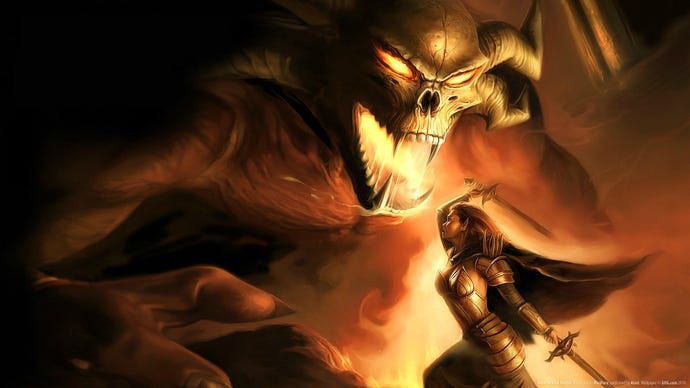Remembering the Early Days of BioWare with Co-Founder Trent Oster
Beamdog and BioWare co-founder Trent Oster talks about the early days of the studio, before Electronic Arts.
This article first appeared on USgamer, a partner publication of VG247. Some content, such as this article, has been migrated to VG247 for posterity after USgamer's closure - but it has not been edited or further vetted by the VG247 team.
It's not hard to wonder if the best days of BioWare are behind it. This is the studio that helped define an era of RPGs; the studio that brought us Baldur's Gate, Neverwinter Nights, Star Wars: Knights of the Old Republic, Jade Empire, and Mass Effect. But those games were all years ago, and the studio's current efforts haven't gone as well. After the abandonment of Mass Effect: Andromeda and the poor launch of Anthem, which was supposed to be the next big BioWare game, there's running speculation that the infamous "Papa EA" comic will eventually come true.

The history of BioWare is shorter than some casual fans might think. The company's first game only came out in 1995, in the middle of the fifth console generation, which included the PlayStation, Nintendo 64, and Sega Saturn. That's considerably younger than companies like Nintendo and Sega, but also years younger than its former peers, like Origin Systems, Sierra Entertainment, or Strategic Simulations, Inc. It's a studio that rose quickly, landing a bonafide hit on only its second title.
Of the six founders of BioWare—Ray Muzyka, Greg Zeschuk, Trent Oster, Brent Oster, Marcel Zeschuk, and Augustine Yip—none are with the studio anymore. Brent Oster left in the middle of the development of the studio's first game, Shattered Steel, and Yip left to continue his career in medicine some time after that release. Marcel Zeschuk left to pursue agriculture. Ray Muzyka and Greg Zeschuk, who became the face of BioWare, both left the studio in 2012. And then there's Trent Oster, the only BioWare co-founder still making games, even if he isn't doing so for BioWare.
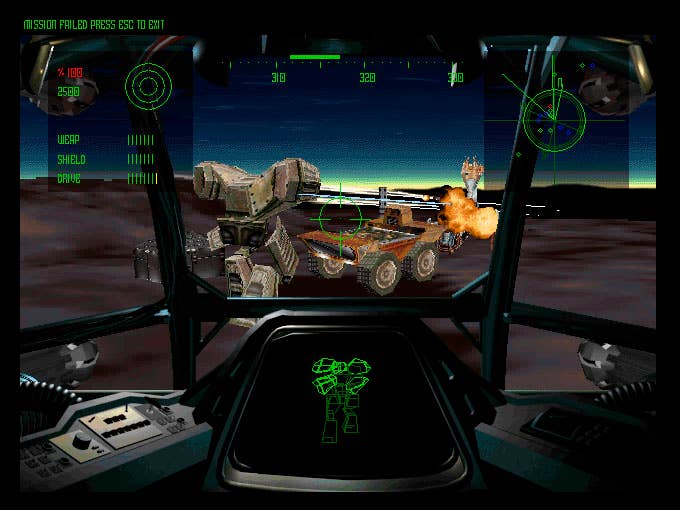
Forging Shattered Steel
BioWare's first official game was Shattered Steel, but there was actually a smaller game released before that. There were six founders, split into two groups of three. Oster's group came together during his third year of college, when his brother Brent Oster had left the Canadian Armed Forces and Marcel Zeschuk, his best friend from childhood, had recently graduated with a degree in Agriculture. The trio created a small computer consulting firm, using their free time to work on a game at night.
"I got into the game industry as a bet," Trent Oster tells me. "The three of us got together and were like, 'Okay, we're going to do a business together over the summer. If by the end of summer, we can build a video game, we're going to become professional—capital P professional—video game developers.' We made something called Blasteroids 3D. I don't know if you'd call it a game."
Blasteroids 3D was Asteroids, but in faked first-person viewpoint using scaling sprites. "It was quite horrible," Oster says, "but it was proof." The trio had made a working game within their deadline. They were game developers now, and started work on what would eventually become Shattered Steel.
At the same time, Marcel's cousin Greg Zeschuk was working with his friends Ray Muzyka and Augustine Yip as residents at the University of Alberta's Faculty of Medicine. This trio had bonded over their love of games, working on medical software called the Gastroenterology Patient Simulator, but they wanted to do something more creative. Using the profits from the medical software, Greg and Marcel brought both teams together. Thus, BioWare was created in Greg's basement.
Development continued on Shattered Steel, but the team fractured almost immediately, with Oster pointing to his brother as part of the problem. "My brother... he can be hard to work with. He's a very challenging individual," he says. Brent Oster wanted Marcel gone from the team, because he felt he wasn't pulling his weight. Greg, who was managing the company, complied. Marcel Zeschuk was the first founder to leave the newly-founded BioWare.
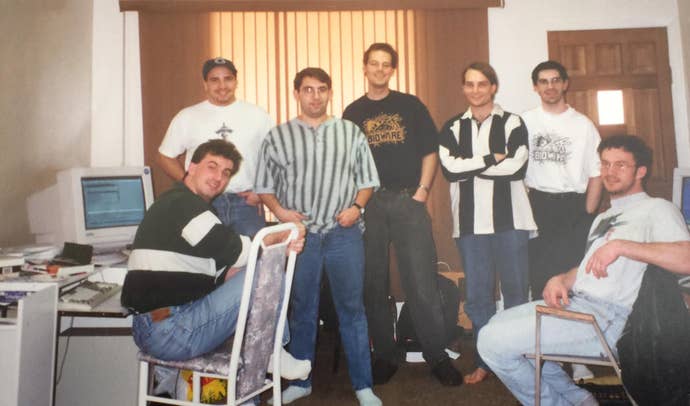
"So Greg got rid of his own cousin, which was my best friend. It was really uncomfortable," says Oster. Brent brought similar concerns about Augustine Yip, but the rest of the team stood behind him. So Brent and Trent Oster left BioWare, taking Shattered Steel with them. They formed a new studio called Pyrotek Studios in Calgary. Trent worked on the input code, sound engine, AI, and pathfinding for Shattered Steel, though he also credits Interplay's Tim Donley with tackling the cinematics. Unfortunately, internal troubles popped up once again.
"After nine months, my brother's like, 'I want you gone,' and I'm like, 'I'm the only one left with you! You can't get rid of me!' We had a fight about it. He wound up taking a job at Origin, working on their combat simulators," says Trent Oster. "I take Shattered Steel, bring it back to BioWare, rejoined with the guys and we finished it up there."
Oster had a steadfast demand for his return to Edmonton. If BioWare was going to be a professional game studio, they should look the part. The team needed a new office. Their original office was around The Sugar Bowl, a cafe near the University of Alberta. (It still exists to this day.) They moved a short distance to Whyte Avenue, which was a "trendy area" in Edmonton.

It was 1995, and Shattered Steel would see release a year later, published by Fallout creator Interplay Productions. Oster says Shattered Steel was "reasonably successful," but its success was blunted, as the mech-based simulation game had an unfortunate release date: It was up against MechWarrior 2: Mercenaries. The latter game was from Activision, and built on the successful MechWarrior pen-and-paper role-playing game from FASA Corporation. "We got crushed," admits Oster.
Shattered Steel was good enough to give BioWare some visibility though, and Interplay was willing to do more with the fledgling studio. Oster also believes that the team at BioWare lucked out, starting game development during a change in technology.
"A lot of people don't realize how lucky we were at BioWare," he explains. "Shattered Steel was right at that point where 16-bit DOS moved to 32-bit DOS. DOS/4GW, DOS extenders. It was a different world. All the programmers who had done this 16-bit stuff had to re-learn how to work. We were able to jump in as these noobs, essentially on parity with these really talented tech teams."
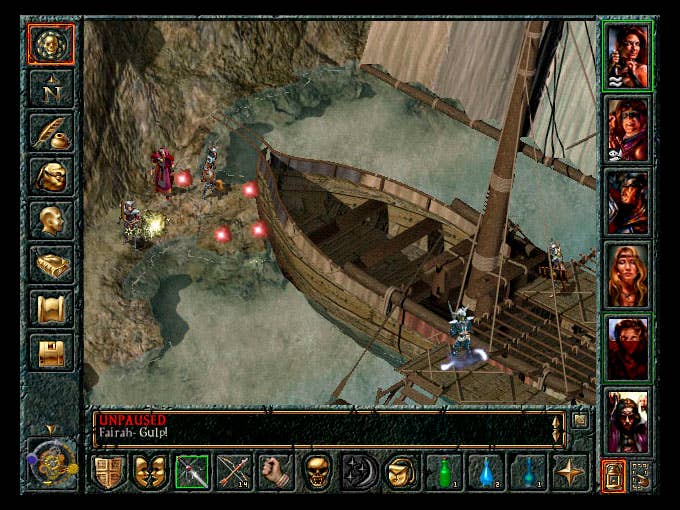
The Infinity Engine is Born
Following Shattered Steel, the small team of around 30 people at BioWare began to work on multiple projects. One branch of the team began working on a sequel to Shattered Steel. Interplay would ultimately step in and pump the brakes on Shattered Steel 2, due to that game's lower sales. Instead, that team moved to work on MDK 2, while the other branch of the team was working on an RPG called Battleground Infinity. Lead programmer Scott Greg had taken the demo code for the Windows API DirectDraw and built an exploratory project with it. The demo was in 640x480 resolution, but with 16,000 colors, as opposed to the 256-color standard at the time. "It looked more vibrant than a lot of other games did at that time," says Oster.
Battleground Infinity was supposed to take place during Ragnarok, the last war between the gods. BioWare sent out the demo to a number of studios, but everyone passed on it. Probably because, in Oster's own words, "it was horrible."
"All you could do in the demo was walk around. You could click over an enemy and go 'Smite.' It would shoot a little ball of fire and they would die. There was not much of a game there, but it showed off the technical approach we wanted to take," he says.
Oster also notes that western RPGs were a hard sell in the mid-90s. "There was this period where everyone was convinced that western RPGs were dead. There was the Pool of Radiance line, all the Gold Box games, the Dragonlance titles. Then it just felt like nobody wanted to buy that anymore. Everybody that we talked to about doing an RPG was like, 'RPGs are dead man.' So we went against the crowd on that one," Oster tells me.
BioWare was still working closely with Interplay at that time. Within Interplay, there was a division called Black Isle Studios, founded by Feargus Urquhart. Black Isle, named after a peninsula in Urquhart's home country of Scotland, was where Interplay internally developed its own games. The studio is where Fallout and Fallout 2 were created. According to Oster, Urquhart asked to see the Battleground Infinity demo. He saw potential in the engine that powered the demo, especially when paired with the Dungeons & Dragons license Interplay had just acquired from Strategic Simulations, Inc, who had developed the earlier Gold Box games.

With a vision in mind, BioWare just needed to figure out where to set the game in the Dungeons & Dragons canon. According to Oster, this wasn't a hard choice. BioWare's founders had always had a fondness for D&D, but there was a member of the team whose zeal outpaced all others: James Ohlen.
"If you wanted to pick a human on the planet to do this, he was the right man," explains Oster. "He was super hardcore into two things: Dungeons & Dragons and Star Wars. So he obsessed about it. We were like, 'Okay we're going to do a D&D game, where are we going to set it?' He was like, 'Forgotten Realms! Most famous setting, why would we go anywhere else?'"
The specifics were a little harder to nail down though. "We fought about the name for the next two years. Eventually everybody was like, 'Eh, Baldur's Gate's fine.' It got to the point that people were just making up offensive names to stop the discussion," he jokes.
All the characters in Baldur's Gate came from D&D games played within the BioWare team. Writer Lukas Kristjanson expanded upon the familiar RPG characters to create one of the most memorable RPG casts ever, including one of the most beloved Baldur's Gate characters.
"My business partner in Beamdog, [Cameron Tofer], his character was Minsc," says Oster. "He played the ranger and he had Boo as a companion, because Minsc was really dumb. Minsc was also a couple of levels behind people in the party, so usually in the first round or two, Minsc would go down and Cam would essentially play Boo. Shar-Teel was a party member, even Sarevok was a party member. Jon Irenicus was another player character called Jon Icarus. All those characters, the reason that they're as interesting as they are, is because people played them and fleshed them out over the course of years."
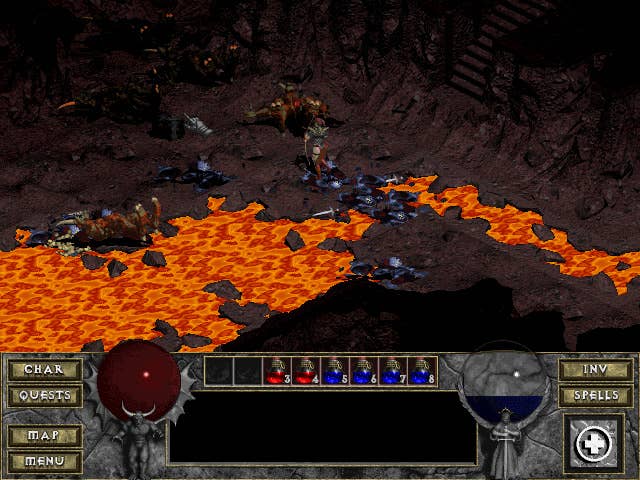
In the middle of the development of Baldur's Gate, the team was stopped dead in its tracks by another game. In December 1996, Blizzard Entertainment released Diablo, a hack-and-slash dungeon crawler. BioWare was a team of developers, but it was also a team of players.
"Diablo showed the potential of the space," Oster remembers. "When Diablo actually came out, it was seriously, three days it took down the company. We did some animation work on the side. I had been at work for close to 24 hours, I finish this animation project, put it to bed, fire up Diablo and I start playing. And I play for another 24 hours. I was at my desk for like three days. There was a lot of terror when we played it for the first time. But for some reason it was good for us. It forced us to get better."
Still, the team got back on track with Baldur's Gate. Eventually, they built a demo of the game, allowing someone to play a single quest from start to finish. Producer Diarmid Clarke, from Interplay's new U.K. office, was so excited about this first demo, that he flew from the U.K. to live in Edmonton and help with the project. "He helped us navigate Interplay's internals so we could make the game as good as it could be," says Oster.
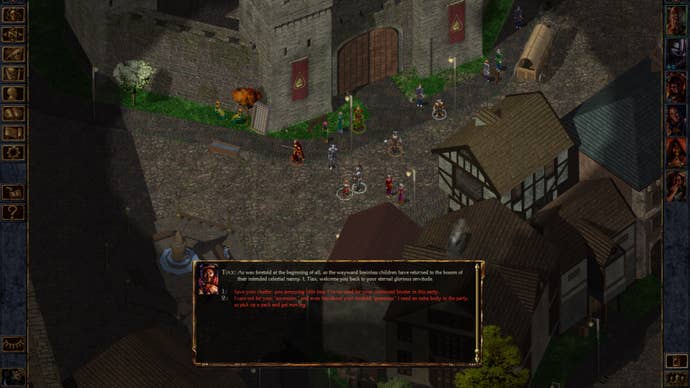
At the time, Oster himself was working with the 3D modelling department for Baldur's Gate. He had always played a number of roles at BioWare, coding or doing art as needed. While developing Baldur's Gate, he ultimately decided that it was time to try something different. He wanted to lead his own project for once.
So he became the director and producer of the project that would eventually launch as Neverwinter Nights. Yes, while Neverwinter Nights would not launch until 2002, its development ran concurrently to the first Baldur's Gate. In fact, Oster would return to Baldur's Gate to help finish that game and part of the way Neverwinter Nights turned out is because of that work.
"I came back to help finish Baldur's Gate. I ran a multiplayer testing rig with myself and the lead artist on Neverwinter Nights, Tobyn Manthorpe. Three machines each," says Oster. "We'd get in at 8 in the morning, fire up the machines, grab the new build, and we had a multiplayer checklist. We did that for probably three months. As a result, I hate UI. There are so many clicks to set up a Baldur's Gate multiplayer game, or at least there were. That and the UI for Baldur's Gate was a lot of grey stone. That's why the Neverwinter UI is so minimal. That was my reaction to the Baldur's Gate UI."
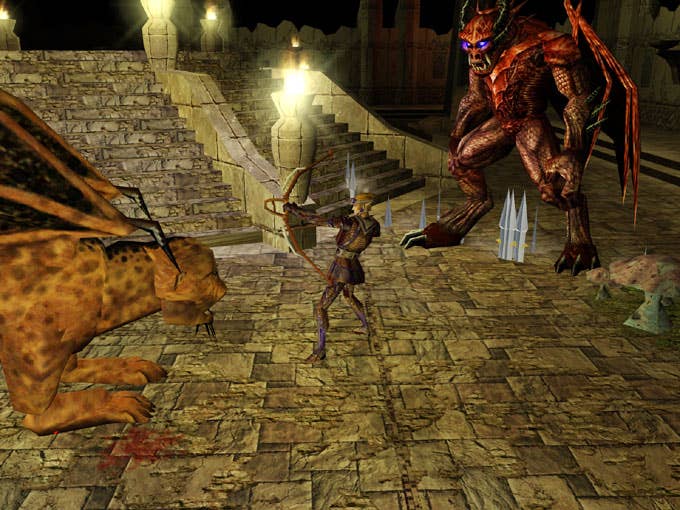
The Neverwinter Dream
While Baldur's Gate was an adventure created by BioWare, Neverwinter Nights was intended to be something different from the beginning. Neverwinter Nights was going to be a game, but Oster wanted something where anyone could craft their own grand Dungeons & Dragons campaign. It was a huge undertaking and Oster's schedule for development was a total of five years.
"We presented it and we got told, 'Can you make it in three?' 'Probably not.' 'Okay what if you take another hundred people?' 'Give us your schedule and we'll work with that.' In the end, it wound up taking us five years, like we predicted. The team was 75 people full-time on it at the end," he says.
At this point, it's important to recall that Trent Oster was one of the younger founders at BioWare, being in the middle of college when the company was founded, as opposed to being in residency like the doctors. When he decided to run the Neverwinter Nights project, Oster was only 23, leading a full 75-person team.
"I literally ran it like a movie director; I had a vision of what I wanted to achieve. What was amazing was every time I'd talk to somebody about what my vision was, when they finished it and brought it back, it was better than what I'd described to them. That's the joy of game development. You have a concept in your head, and the end thing that comes back to you is so much better," Oster tells me.
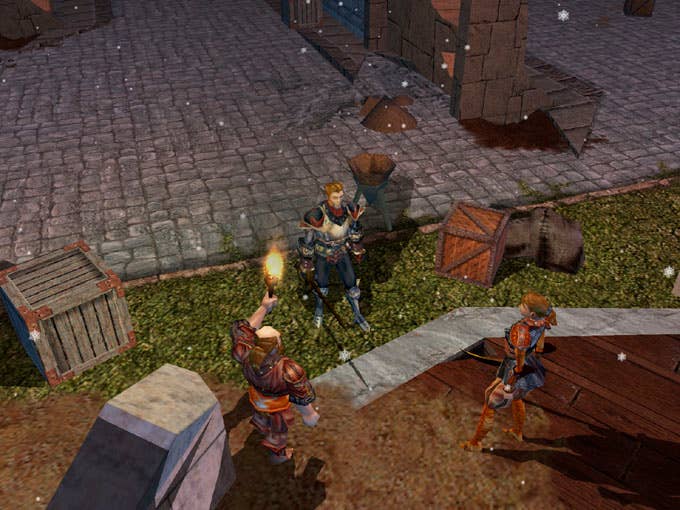
Oster admits that he focused on the toolset more than the story. "To me, what I was making was almost a game operating system. I was so focused on making that platform work that maybe the story kind of fell by the wayside. At the end, I wasn't really happy with the initial campaign. I really wasn't happy with the stories we did until Hordes of the Underdark," he says.
Development of Neverwinter began under the existing partnership between BioWare and Interplay. In 1998 though, Interplay's financial status was in dire straits. The publisher was circling around bankruptcy court, and went public to stave off full bankruptcy. Unfortunately, it didn't help matters much and Interplay ultimately decided to give up the license to Infogrames, who would publish Neverwinter Nights under its Atari brand.
BioWare could self-fund it for a time because it was relatively successful at this point. Oster says he was "hyper-focused" on Neverwinter Nights, but at the same time, MDK 2 was done, Baldur's Gate 2: Throne of Bhaal was finishing up, and Star Wars: Knights of the Old Republic was starting. And one of Oster's team members on Neverwinter was chosen to help lead KOTOR, partially under Oster's recommendation.
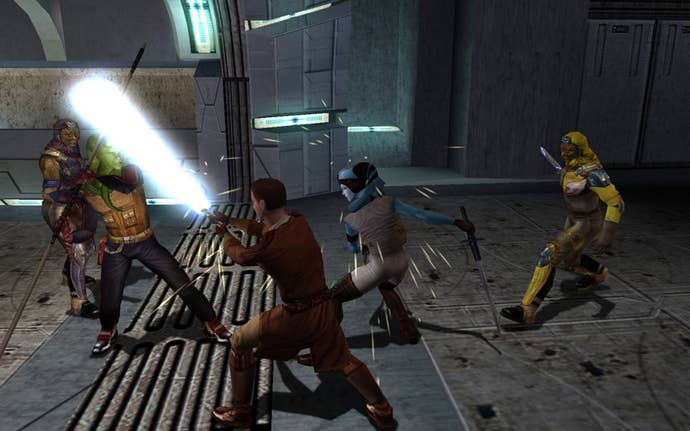
"Star Wars was actually Casey Hudson, an artist on Neverwinter. They pulled him over to MDK 2 to help finish it, and then after that, they were like, 'Hey, LucasArts is interested in doing an RPG with us. Who can lead it?' I was like, 'Casey's probably the guy.' The feeling during that time at BioWare was, 'I got Neverwinter, Casey's got Star Wars and he's got [James Ohlen].' I was really heads-down on Neverwinter," Oster remembers.
Finishing Neverwinter took a lot out of the team at BioWare. It was only one of many projects at the studio, but the vision was so intensive that crunch followed. Oster recalls working normal hours for the first two years of development, moving up to 10-12 hour days, seven days a week in year three. He recalls working nearly 212 hours in the final two weeks of development, absolutely wringing himself and the team to the bone to get the game done.
"Neverwinter had to ship, because we were done," Oster says. "There was nothing left in the team. If we had decided it needed more polish, we would've had to shut down production, send everyone home on a holiday. We shipped it out at 3 in the morning. I went home and I slept for three days straight."
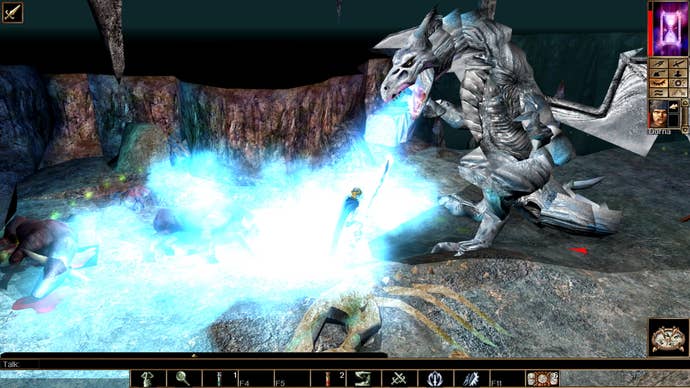
Knights of the Old BioWare
At this point, BioWare had risen to become one of the top RPG developers in the west. By 2002, only seven years after its founding, it had successfully launched Baldur's Gate, Baldur's Gate 2: Shadows of Amn, Neverwinter Nights, and several expansions for those titles. The Infinity Engine made for Baldur's Gate was also utilized to make Planescape: Torment, Icewind Dale, and Icewind Dale 2 over at Black Isle Studios.
Neverwinter Nights itself had such a robust toolset that BioWare actually used it to find new talent. "There's a point where you're building your own full-fledged adventure where you're a game designer. That actually became our lead recruiting tool for years," says Oster. "Two guys I remember, [Dragon Age: Origins lead technical designer Yaron Jakobs] out of Israel and [Dragon Age: Origins lead systems designer Georg Zoeller] out of Germany, they sent in these mods. Our guys were like, 'The engine doesn't do that.' We called them up, bring them out for an interview, boom, we hired both of them. They both lasted a decade plus at BioWare. Huge contributors to the company."
Star Wars: Knights of the Old Republic, released in 2003 on Microsoft's Xbox, is also the beginning of a change in BioWare. Not only was Star Wars a high-profile license, but it was also the studio's first RPG on consoles. MDK 2 had previously released on Dreamcast and PlayStation 2, but that was an action game; Knights of the Old Republic brought that expertise together with BioWare's RPG prowess. BioWare had a name in PC gaming circles already, but KOTOR brought them to a much larger audience.
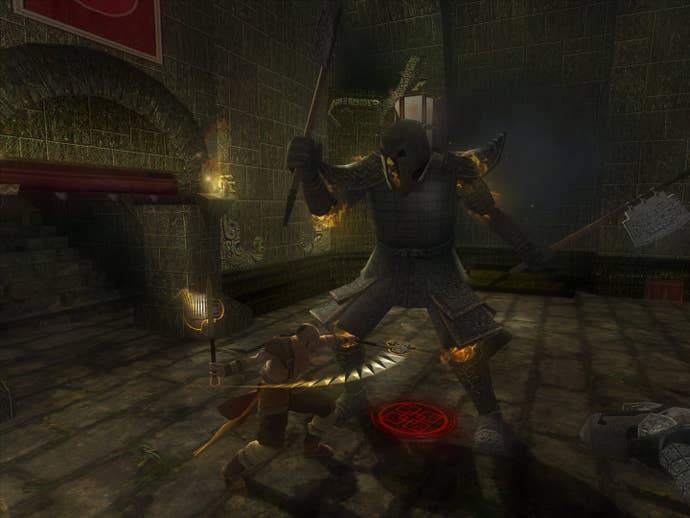
Jade Empire was intended to be a similar success. It was the company's first original property, not based on any outside license. BioWare co-founders Ray Muzyka and Greg Zeschuk had dreamed of working on Jade Empire for years, and in 2001, they finally kicked off development. Microsoft Games Studios picked up Jade Empire for publishing on Xbox, hoping to repeat the success of Star Wars: Knights of the Old Republic. It would launch on the console in April 2005, just seven months before the launch of the all-new Xbox 360. It was critically acclaimed at launch, but the sales were not up to snuff.
"Jade Empire went out and it underperformed. We had Dragon Age and we had Mass Effect, but they were both far, far off. So there was a little fear," says Oster.
Into this period of uncertainty, came Elevation Partners, a private equity fund that had an idea. It would invest $300 million and create a partnership between BioWare and Mercenaries developer Pandemic Studios. Elevation Partners was founded by ex-Electronic Arts president John Riccitiello in 2004, and was aiming to establish a new independent studio. "BioWare and Pandemic will use our new alliance as a launch pad for exchanging creative ideas, cutting edge technologies and top talent while retaining our distinctive cultures," said Ray Muzyka in a press release at the time. The problem was the industry was undergoing another transition, one which Elevation hadn't budgeted for.
"This was right at the transition from Xbox to Xbox 360, where suddenly all the budgets doubled because you had to make way more art," says Oster. "Elevation Partners had this budgetary plan and suddenly they're like, 'What do you mean its doubling?'"
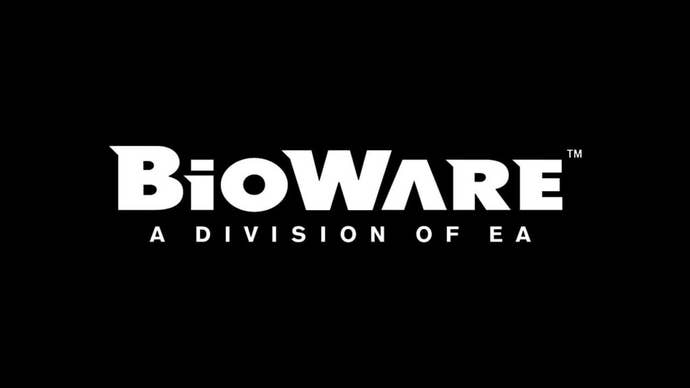
John Riccitiello left Elevation Partners in February 2007 to rejoin Electronic Arts. When Elevation started to panic about its studios, Riccitiello offered them a way out. EA would purchase BioWare and Pandemic Studios for up to $620 million. At the time, BioWare was jazzed about the change, as EA was one of the biggest publishers in the world.
"'This'll be great! We'll finally have all the money to do all the things we wanted to do. It'll be awesome!'" remembers Oster. "Yeah, that didn't happen. The thing about the big companies is they have to generate a big profit to keep the machine going. We didn't really get this massive flood of resources, it was business as usual."
One change in resources did happen, with BioWare moving from its current trendy spot in the Edmonton City Centre to a location further South. Oster remembers this as a change in the studios' culture, as it moved it from a walking studio, to a driving one.
"BioWare was in this building, we called it the Chapters building, because there was a Chapters on the first two floors and BioWare had the third and fourth floor. That was a really pedestrian-friendly, high-energy space," he says. Then the studio moved to an office that was by a freeway. "So instead of wandering down the street to grab lunch, you had to hop in a car, drive somewhere. The office would basically shut down at 6, whereas when we were at the Chapters building, half the staff lived within four or five blocks. It was this culture change."
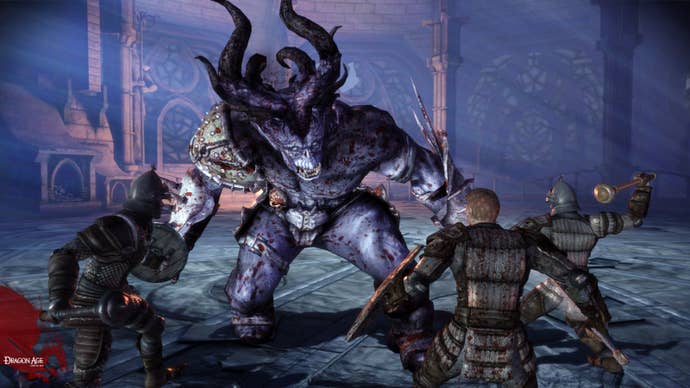
An Agent Disavowed
During this time, Oster himself had risen to become the Director of Technology at BioWare. He was tasked with working on a brand-new engine for the company. Knights of the Old Republic was built on the Odyssey Engine, which itself followed the Aurora Engine used for Neverwinter Nights. At the time, Dragon Age: Origins was also utilizing the Aurora Engine, with this new engine planned for a larger concept at BioWare.
"My vision was I wanted to do an open-world streaming game," says Oster. "This was back before... I don't think Grand Theft Auto 3 had come out yet. I called the concept 'Edge.' I'm a hero, I roll into a city, there's like 20-30 plots I can do in the city. Based on what factions I interact with, it affects the overall story. The concept was to have a streaming engine that was always pulling new content in. We got about two years into R&D on it, and then the Dragon Age project, they weren't making a lot of headway on the Neverwinter tech."
So the team that was working on the new engine, which came to be called the Eclipse Engine, started to work with the Dragon Age team. "The Dragon Age team couldn't figure out how to build an open-world, so they wanted to revert back to area-based; it was years of negotiation," says Oster. Ultimately, Dragon Age: Origins was shifted back to an area-based RPG, leaving behind Oster's open-world dreams.
With the change, Oster decided to move back into development, starting what would be his final project at BioWare. He wanted to lead a game again, and this time the concept was an episodic espionage game known only as Agent. Oster was a fan of James Bond, but felt that Bond games tended to miss the point of the character: he wasn't meant for a shooter, instead being more cloak and dagger.
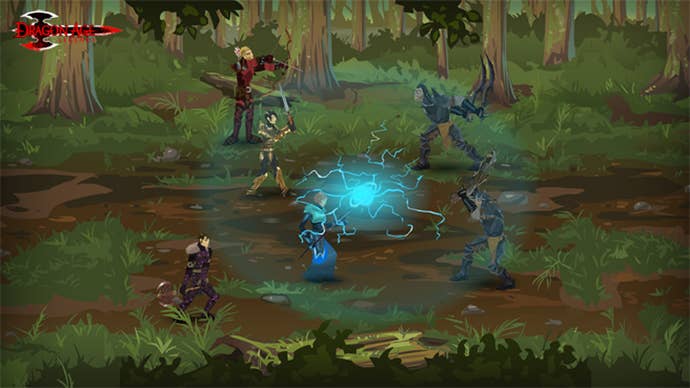
"We really wanted to push the social engagement parts of it, where conversations should be combat. We did a lot of fun prototype stuff. It was Unreal Engine 3-based," he recalls. Oster described the Agent demo as a reverse interrogation scene, where our hero is strapped to a chair, with the antagonist electrocuting him with jumper cables. In addition to our hero and the villain, the hero's partner was also in the room, undercover as a guard.
"The idea was you're actually trying to get information out of the guy who's trying to interrogate you. Your job as the player was to antagonize the man to the point that he becomes emotionally unstable, to extract the information that you need... without him killing you. It was just such an emotionally charged scene. The demo felt great," says Oster.
Looking back, he admits that Agent was probably a little ahead of its time. Electronic Arts wasn't interested in an episodic game, especially one that was digital-only. The publisher had another idea for the concept.
"At one point, EA was like, 'Hey, so what if we made this a Facebook game?' I was like, 'If you want a Facebook game, I'm not your guy.' So we had the talk: 'You know what? I can't succeed at EA. So let's figure out how we split ways,'" he says.
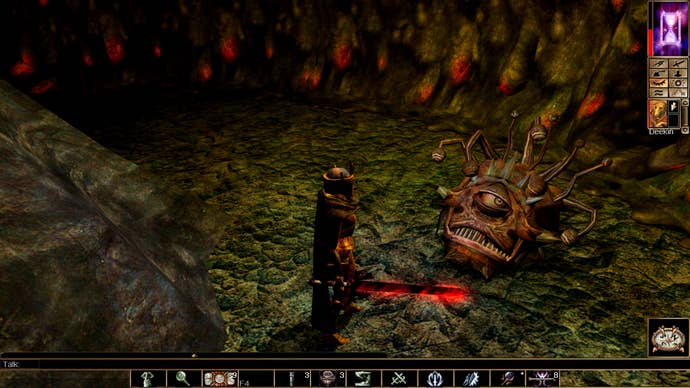
Overhauling His Career
Trent Oster left BioWare in 2009, intending to take a year off from game development. A week and a half into his sabbatical, Oster decided that game development was just too important to him. He called up former BioWare colleague Cameron Tofer, who had been a lead programmer on MDK 2 and engine programmer on Baldur's Gate 2. The pair started up Beamdog, and the smaller Overhaul Games division within that company. The studio started with a port of MDK 2 to Wii and MDK 2 HD, later moving onto the Enhanced Editions of the earlier BioWare and Black Isle RPGs. Most of Beamdog's titles—Baldur's Gate: Enhanced Edition, Baldur's Gate 2: Enhanced Edition, Icewind Dale: Enhanced Edition, Planescape: Torment: Enhanced Edition, and Neverwinter Nights: Enhanced Edition—are coming to PS4, Xbox One, and Switch this year.
Those releases are only "step two" in Oster's plan for Beamdog. In addition to the recent release of Axis & Allies 1942 Online, based on the classic board game, Beamdog will likely take its expertise and work on a new RPG.
"We've got that whole team working on the console stuff. When the consoles are done, they are going to build something. What it is, I'm not sure yet. But we've been elbows deep in some of the best western RPGS for the last eight or nine years. That's just been training. It's been building up our skills. Now that we've been that far into the DNA of RPGs, I think we're going to do something RPG," he admits.
At the same time, BioWare continues to falter. Anthem just recently saw its Cataclysm update, which fell below the expectations that the community had for it. This comes alongside the news that Anthem lead producer Ben Irving and Dragon Age lead producer Fernando Melo have both left BioWare. All eyes are on the next Dragon Age game, a title whose development has already been rebooted once.
The current BioWare is essentially a Ship of Theseus, a thought experiment that asks if an object that has had all its parts replaced is still the same object. BioWare isn't the same studio that made Baldur's Gate, Neverwinter Nights, Knights of the Old Republic, or even Mass Effect. Too many people have left and been replaced, the studio culture is different. It feels like the spark is gone. But there's hope in talented RPG studios like Beamdog, Larian Studios (which is developing Baldur's Gate 3), InXile Entertainment, Obsidian Entertainment, and more. And who knows? Maybe the next Dragon Age is exactly what the studio needs to get its mojo back. A comeback story would be a great beat in the ongoing adventure of BioWare, rather than a harsh ending.
